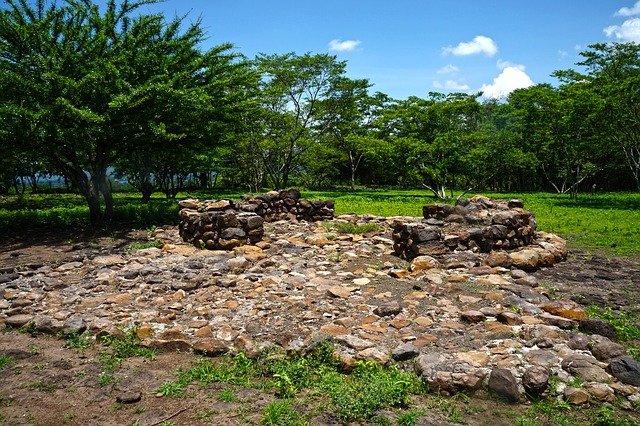George Washington sólo salió de Estados Unidos en una ocasión, en 1751, para visitar a su hermano enfermo en Barbados.

The pre-Hispanic archaeological legacy you can find in El Salvador is fascinating. In the small Central American country, known for being one of the world's top surfing destinations, you can also enjoy exciting cultural experiences. Visit its archaeological parks and discover more about the history, culture, architecture or how the ancient pre-Hispanic civilizations lived. The largest archaeological zone in the country is Chalchuapa, which includes several archaeological sites such as Tazumal, Casa Blanca, El Trapiche and the Cuscachapa Lagoon.
If you are passionate about architecture we invite you to discover these impressive archaeological sites of El Salvador.
Tazumal Archaeological Site
Tazumal was the first archaeological park in El Salvador and it is among the oldest in the Central American region. It is located in the town of Chalchuapa in the Department of Santa Ana. This site was an important Mayan settlement and it was inhabited from the Early Classic period (420-600 AD) to the Early Postclassic period (900-1200 AD). The site is made up of several structures, the largest of which is 24 meters high. Tombs with offerings such as vessels, jade jewelry, ball game artifacts and ceramic figures were found inside One of the most important sculptures found in this site was the Tazumal Stela. It is also known as the Virgin of Tazumal and is 2.65 meters high.
This Archaeological Park also has the Stanley Boggs Museum where several findings from Tazumal and other sites in the archaeological zone of Chalchuapa are exhibited.
San Andres
This archaeological site is located in the valley of Zapotitán, near the Ceren Jewel , in the department of La Libertad. It was an important political-ceremonial center and it was the regional capital between 600 and 900 AD. Its monumental center is composed of a complex of pyramids and annexed constructions that occupy an area of approximately 20 hectares.
The largest pyramidal structure of the site is known as La Campana. Ceren Jewel This Archaeological Park is located in San Juan Opico, in the Department of La Libertad and it is one of the most important archaeological sites in Mesoamerica. Ceren Jewel was an agricultural village inhabited by Mayan settlers between 550 and 650 AD.
The village was buried by the eruption of the Loma Caldera volcano around 650 A.D. and it remained under the ashes until its discovery in 1976. The findings found in this pre-Columbian site give us an insight into the daily life of a Mayan farming village 1,400 years ago.
They have found housing structures, warehouses, a kitchen, cooking utensils, bean seeds, achiote, corn and yucca, bowls, pots and grinding stones, among others. A temazcal or bath-sauna was also found. The site also has a very complete museum where you can see photographs and plans, pieces and objects found locally and exhibits of the studies carried out by American universities.
It was declared a World Heritage Site in 1993 and is a National Monument of El Salvador.
Casa Blanca Archaeological Park
This archaeological site is located in the Department of Santa Ana. It consists of six structures: 3 pyramids and 3 smaller structures. In addition to the structures, it has a museum and an indigo workshop. The latter is a very popular attraction among visitors and it is managed by people trained in this cultural tradition. The museum exhibits the only stela with Mayan writing known in El Salvador. Unfortunately, it is only a fragment and almost all of its text was intentionally erased in the pre-Hispanic past. It also exhibits a variety of objects mainly from the Late Preclassic Period.
Cihuatán
It is one of the largest archaeological sites in El Salvador. It is believed to have been a pre-Hispanic city of great proportions. Among its main buildings are the Acropolis and the structures of the Western Ceremonial Center. The latter consists of a walled enclosure that includes a main pyramid, two ball courts and several other constructions.

George Washington sólo salió de Estados Unidos en una ocasión, en 1751, para visitar a su hermano enfermo en Barbados.